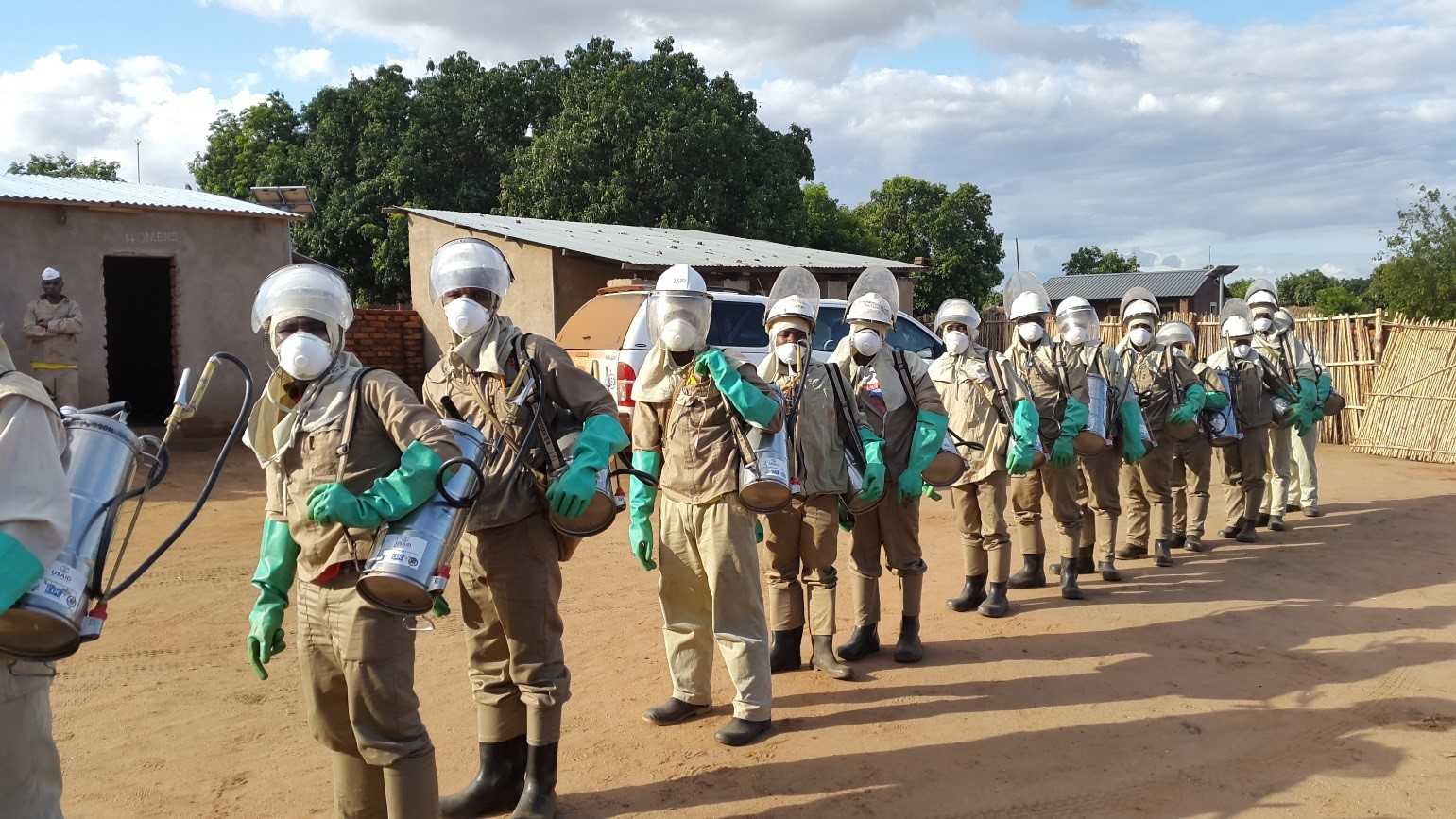PMI IRS Success in Mozambique

Indoor residual spray operators returning from the field in Mocuba, Mozambique, 2015 (Photo by Lourdes Loch, Africa Indoor Residual Spraying Project)
Set an ambitious goal. Collaborate with local leaders. Train. Prepare. Implement. Succeed.
The words are easy to put on paper but it’s another thing altogether to make them work in real life. Especially in a place like Mozambique and especially when you’re working to protect people from malaria through indoor residual spraying (IRS).
But they did work, and those clear and direct marching orders are the reason over 335, 000 homes in Mozambique were sprayed with insecticide for protection against malaria. The President’s Malaria Initiative (PMI) underwrote and supported the spray campaign that ended on December 18, 2015 with an astonishing result: 88%, yes, 88%, of identified structures were sprayed with insecticide. The gold standard of spraying is to treat 85% of individual homes, a level which provides community protection.
Related Links
To get to 88%, PMI collaborated with local government officials in the Mozambique province of Zambezia to coordinate approximately 30 days of spraying. PMI has supported IRS since 2007, specifically in Zambezia, because Zambezia has the highest burden of malaria in Mozambique and prevalence of 55% in children under five years old. In real terms, there were over one million cases of malaria in Zambezia in 2015. Over the years, spraying supported by PMI has occurred in as many as eight and as few as four districts in the province.
In 2015, six of the 22 districts in Zambezia were sprayed by the PMI Africa Indoor Residual Spraying (AIRS) program of Abt Associates, providing protection to 1,631,058 individuals. (That’s more than the entire population of Hawaii.) Without IRS the risk would have been monumental – malaria is the leading cause of death in Mozambique and the leading cause of death for children under five; 42% of deaths for children under five were from malaria, and malaria accounts for 29% of all deaths in the country. IRS is naturally then focused on pregnant women and children under five. A total of 105,400 pregnant women and 287,813 children under five were protected as a result of IRS.
More than 1,500 people, including the PMI AIRS, PMI and National Malaria Control Program (NMCP) staff, were involved in the logistics of training the seasonal workers in both spraying and community outreach. This was just a part of the detailed preparation and coordination required before the spraying began. Meetings and engagement began the collaboration with and buy-in from local leaders essential to IRS success. Many local leaders are familiar with IRS since the program began in 2007 and encourage local support. These important long-standing relationships are increased each year through planning and collaboration.
Spray season commences right before the rainy season. There is an uptick in cases after the rainy season – that’s why IRS is conducted before it starts, although malaria is prevalent in Mozambique year-round. The goal is to have no case increases after the rainy season as a result of the IRS. A major challenge to programmatic success is that this is also prime farming time when people are at their farms rather than at home. The household absenteeism is handled through adjusting spraying times, starting later in the day and working later into the evening, to work around farm schedules. The district headquarters coordinate flexible schedules to maximize the numbers of homes treated and local leaders ask people to be at home for the IRS.
The biggest challenge now is the emerging resistance to current insecticides. Pyrethroids are the insecticides that have historically been used as they’re inexpensive and easy to apply. However, since mosquitoes have developed immunity to the insecticide, PMI AIRS and NMCP switched in 2015 to use the more potent organophosphates in three districts. The organophosphates are more expensive but are very effective. PMI AIRS is switching completely to the organophosphates in 2016.
The PMI AIRS program will begin spraying in seven districts in October 2016. This includes six districts that were sprayed in 2015 plus one additional district, with the goal of having 85% of structures sprayed. This new district was chosen as part of a study to determine the cost-effectiveness of IRS compared to bed nets by comparing the results of one-half of homes being protected by bed nets and one-half being protected by IRS.
In addition to the important progress being made to prevent malaria through IRS, Mozambique is moving towards universal access to insecticide-treated bed nets later this year through a campaign to distribute 18 million nets throughout the country. By 2017 every home in the province will have bed nets, which is an exciting step forward in combatting malaria in Zambezia. As a result of the bed nets distribution, IRS targeting can become more strategic.
This widespread coverage of bed nets and continued use of IRS is expected to lead to decreased malaria prevalence. There haven’t been parades or fireworks to celebrate the hard, frequently behind-the-scenes/unseen efforts to reduce malaria here, but the people who live in Zambezia are grateful for all the efforts to reduce malaria where they live.
- Page last reviewed: May 9, 2016
- Page last updated: May 9, 2016
- Content source:
Global Health
Notice: Linking to a non-federal site does not constitute an endorsement by HHS, CDC or any of its employees of the sponsors or the information and products presented on the site.


 ShareCompartir
ShareCompartir